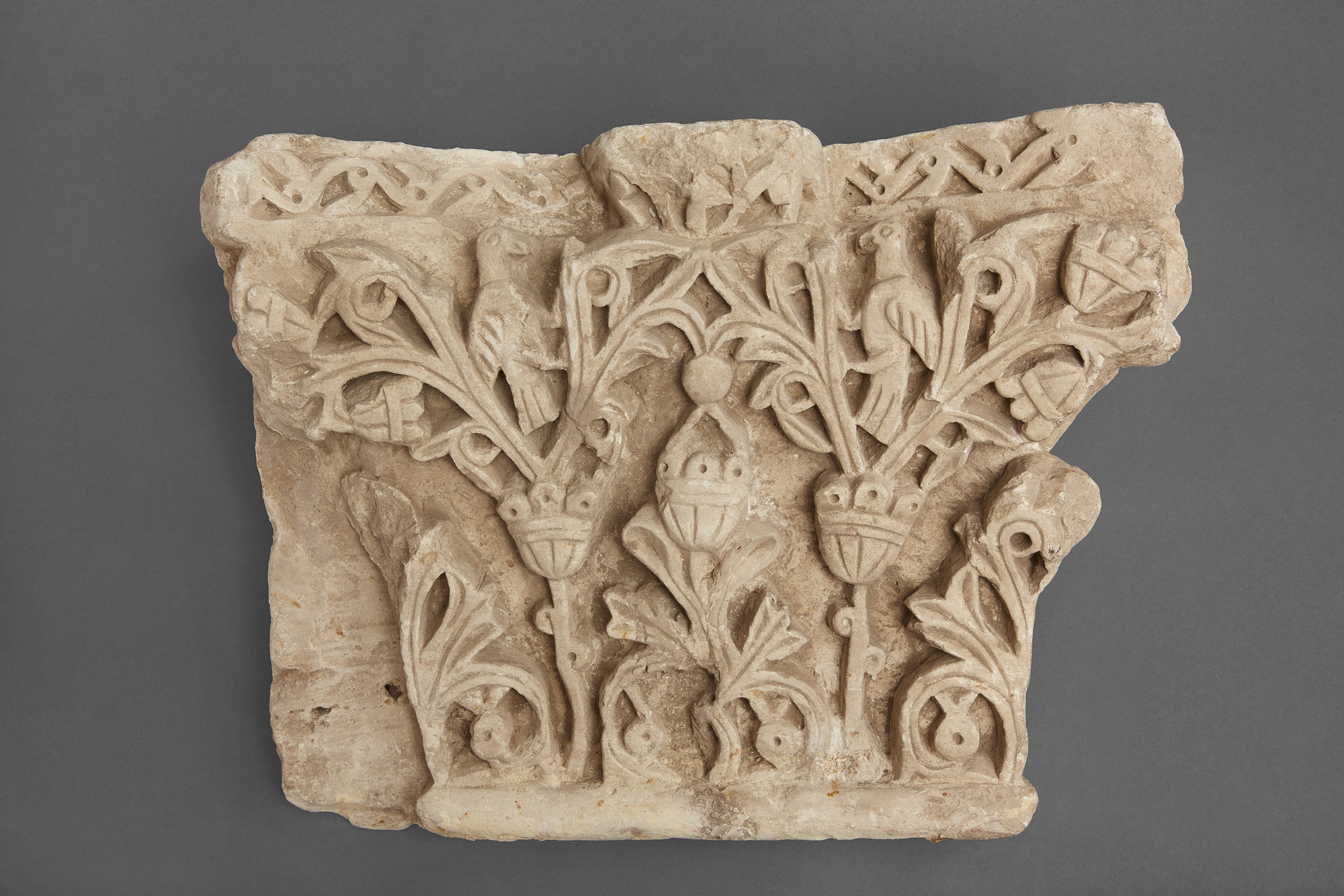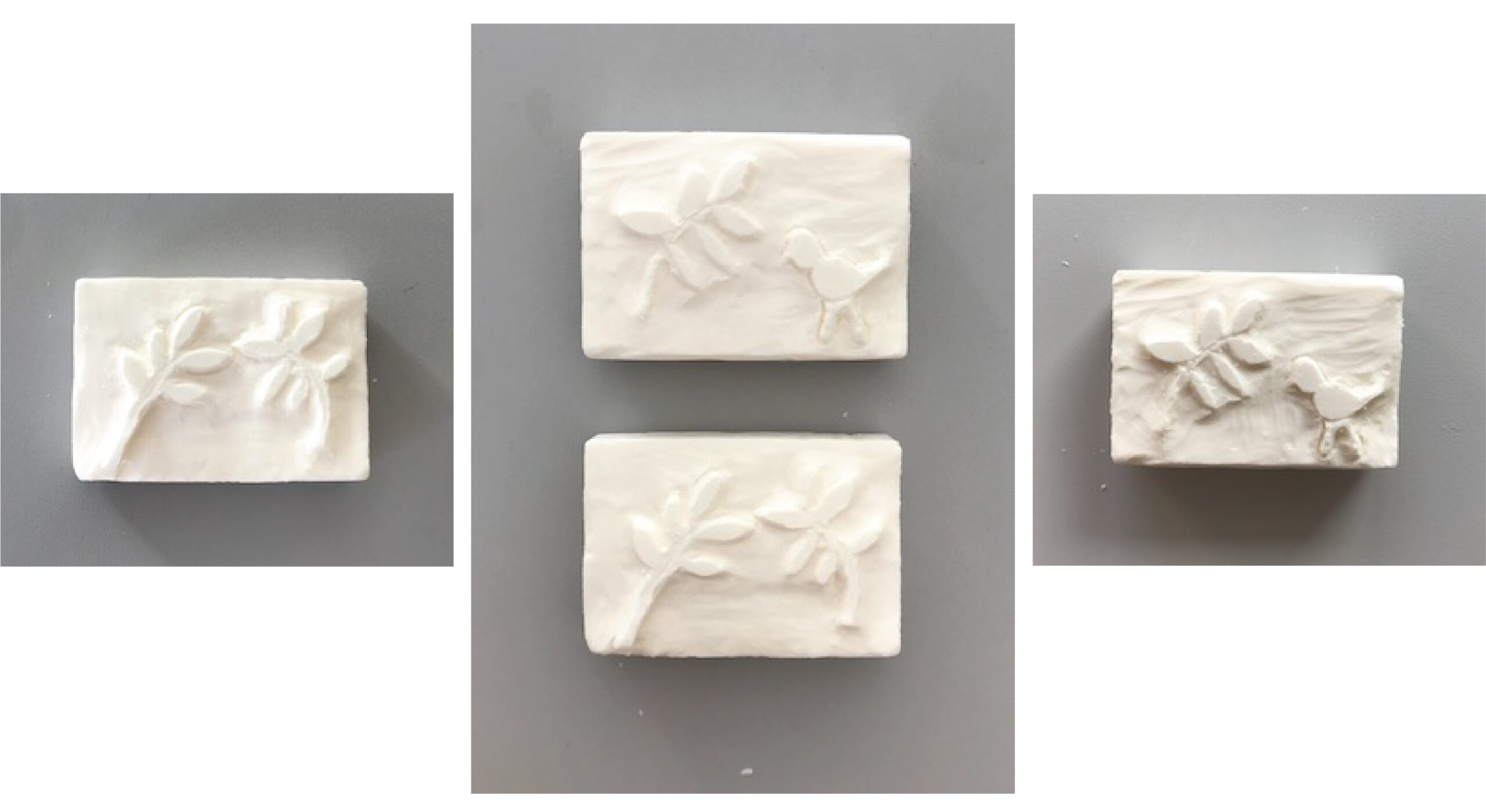
People have used relief carving to make sculptures for thousands of years. Artists start with a flat base, usually wood or stone, and carve away material until a final design stands out against the background. Reliefs are found all over the world. Sometimes they decorate buildings. This piece of sculpture once decorated the exterior of a building, and was created around the 3rd century CE. It is from the top, or capital, of a pilaster. A pilaster is a rectangular building support that looks like a flattened column.
It dates from a very long time ago in Egypt, during a time called the late antique period. The carving combines pictures and cultural traditions from many different places in that area of the world. What do you think this carving shows? How did the artist represent plants? Do you notice any animals?

Pilaster capital with birds, ca. 3rd Century CE. Limestone, 16 ¼ x 23 x 8 inches. The Nadler Collection.

In this activity, you will make your own relief carving from soap.
For this activity you will need:
- 1 bar of soap (soft, white soap like Ivory works best)
- Popsicle sticks or a butter knife
To make your soap carving:
- Unwrap the bar of soap. Ask an adult to help you cut the edge off a popsicle stick to make a point at one end.
- Smooth the surface of your soap by rubbing the long edge of your popsicle stick back and forth across it. This will shave off a thin layer to give you a smooth canvas.
- Lightly carve your design into the soap with the pointed edge of your popsicle stick or knife. Try creating a design with plants and animals or a border!
- Scrape away larger areas around the edges of the design with the popsicle stick’s rounded edge. This will create the relief.
- Use the pointed edge of the popsicle stick to carve away the soap to get fine edges on your relief. Make sure to brush or tap away the soap shavings!